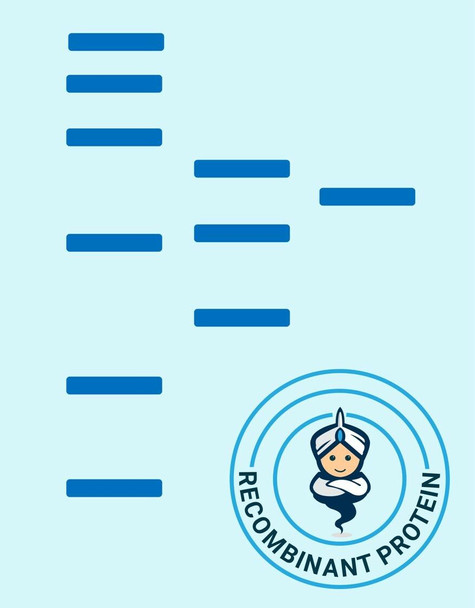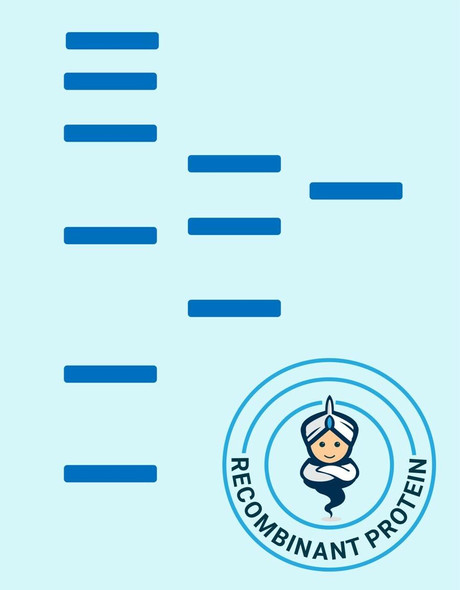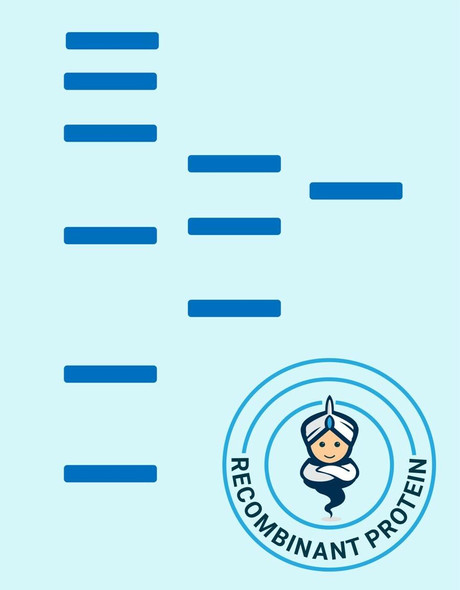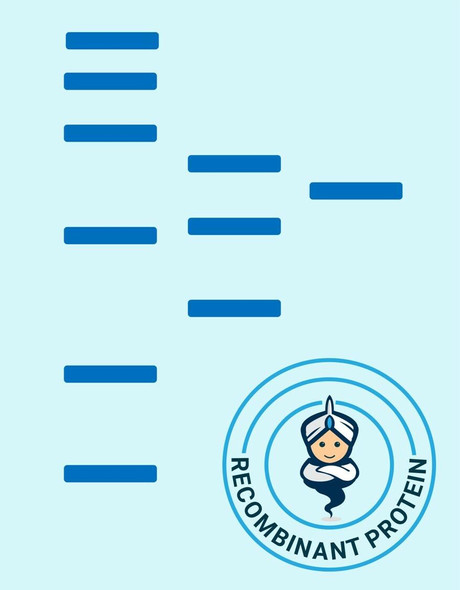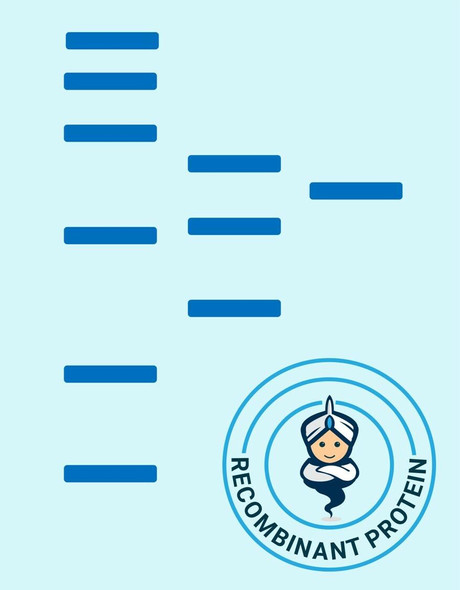Human GSTM1 Recombinant Protein (RPPB1762)
- SKU:
- RPPB1762
- Product Type:
- Recombinant Protein
- Species:
- Human
- Uniprot:
- P10649
- Research Area:
- Enzymes
Description
| Product Name: | Human GSTM1 Recombinant Protein |
| Product Code: | RPPB1762 |
| Size: | 10µg |
| Species: | Human |
| Target: | GSTM1 |
| Synonyms: | GST1, GTH4, GTM1, GSTM1-1, MGC26563, GSTM1a-1a, GSTM1b-1b, GSTM1, Glutathione S-transferase Mu 1, GST class-mu 1, Glutathione S-transferase GT8.7, pmGT10, GST 1-1. |
| Source: | Sf9 Insect cells |
| Physical Appearance: | Sterile Filtered colorless solution. |
| Formulation: | GSTM1 protein solution (0.5mg/ml) contains 40% glycerol, 0.2M NaCl, 2mM DTT and 0.1mM PMSF. |
| Stability: | Store at 4°C if entire vial will be used within 2-4 weeks. Store, frozen at -20°C for longer periods of time.�For long term storage it is recommended to add a carrier protein (0.1% HSA or BSA).Avoid multiple freeze-thaw cycles. |
| Purity: | Greater than 90.0% as determined by SDS-PAGE. |
| Amino Acid Sequence: | ADPMPMILGY WDIRGLAHAI RLLLEYTDSS YEEKKYTMGD APDYDRSQWL NEKFKLGLDF PNLPYLIDGA HKITQSNAIL CYIARKHNLC GETEEEKIRV DILENQTMDN HMQLGMICYN PEFEKLKPKY LEELPEKLKL YSEFLGKRPW FAGNKITFVD FLVYDVLDLH RIFEPKCLDA FPNLKDFISR FEGLEKISAY MKSSRFLPRP VFSKMAVWGN KHHHHHH |
| UniProt Code: | P10649 |
Cytosolic and membrane-bound types of GST are encoded by 2 different supergene families. There are 8 classes of the soluble cytoplasmic mammalian GST: alpha, kappa, mu, omega, pi, sigma, theta and zeta. The mu class of enzymes functions in the detoxification of electrophilic compounds, including carcinogens, therapeutic drugs, environmental toxins and products of oxidative stress, by conjugation with glutathione. The genes encoding the mu class of enzymes are arranged in a gene cluster on chromosome 1p13.3 and aare highly polymorphic. These genetic differences can change an individual's resistance to carcinogens and toxins as well as affect the toxicity and efficacy of certain drugs. Null mutations of this class mu gene have been linked with the rise in a number of cancers.
GSTM1 produced in Sf9 Insect cells is a single, glycosylated polypeptide chain (1-218a.a.) fused to a 9 aa His Tag at C-terminus �containing �227 amino acids and having a molecular mass of �26.8kDa.GSTM1 shows multiple bands between 28-40kDa on SDS-PAGE, reducing conditions and purified by proprietary chromatographic techniques.

